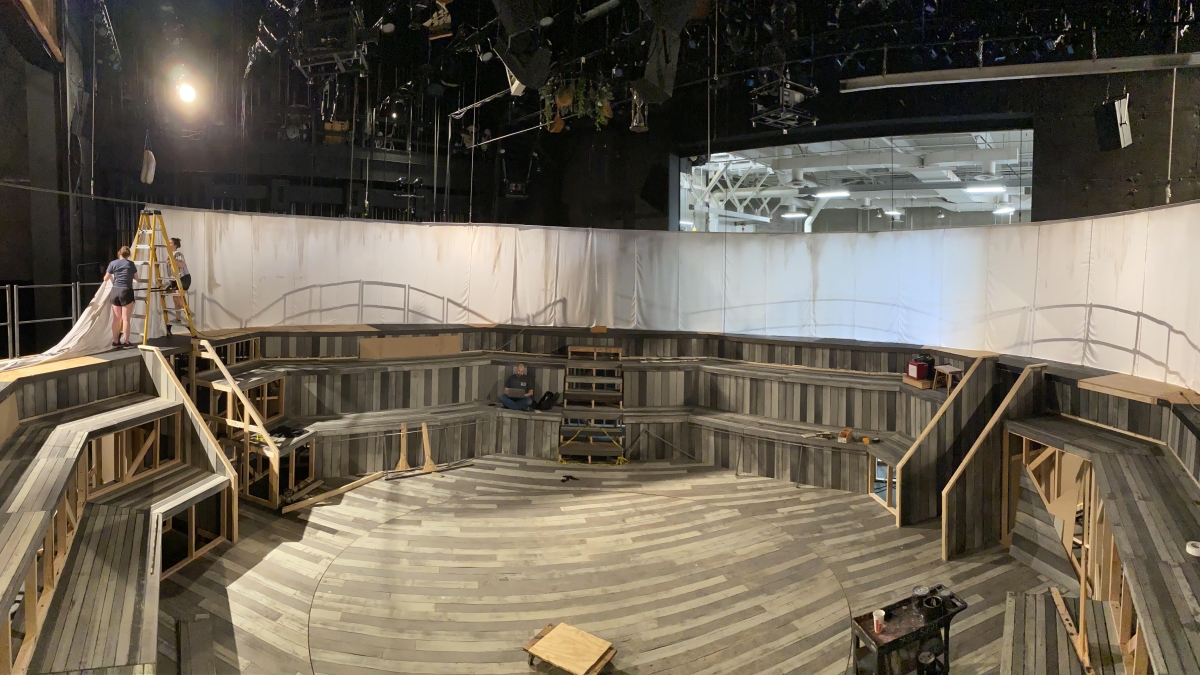What the audience didn’t see: Lessons learned from a canceled play

The cast and crew of “The Crucible” worked on sets, rehearsed and more for a production that was canceled due to COVID-19. Photo courtesy of the School of Music, Dance and Theatre production team
A play is more than what you see on stage. It’s casting and rehearsals, staging and building sets. It’s developing and learning choreography. It’s figuring out the lighting and any multimedia components. It’s designing and making costumes. It’s researching. A play is not just the final product that the audience sees — it’s all the work and the process behind putting on the production.
Each year, faculty, staff and students in the theater program at Arizona State University put in this work together to produce a handful of plays as part of the Herberger Institute for Design and the Arts' performing arts offerings. These productions allow students — from acting majors and design and production students, to others who are interested in participating in theater — the chance to put their education to practice.
The 2019–20 season included a spring production of “The Crucible.” It was set to run after spring break. Opening night was sold out. But the show never made it to the stage — COVID-19 forced the cancellation of the planned performances.
“The first part was coming to acceptance and then just letting go and treasuring what we gained from it,” said Briyannah Simmons, a theater student and crew member for the show.
No one will see the production. Audiences will not have the chance to appreciate and applaud the efforts of the cast and crew. But the work they did is not lost and is still worthy of celebration.
“The beautiful thing about theater and performance that I’ve always loved is that it has a conception, a birth, a life and a death, so we go through an entire life cycle every three to seven weeks, and this was another one. And its life cycle was cut short unfortunately,” said Cari Koch, production stage manager and clinical associate professor. “We still did a lot of work to put it forward, and I hope that we all hold dear the lessons that we learned in this process and get to apply it again in the next show because there’s always, thankfully, another show in another way in another place in another time.”
In this video, the cast and crew of “The Crucible” share what working on the play meant to them and what they will keep with them.
More Arts, humanities and education

ASU instructor’s debut novel becomes a bestseller on Amazon
Desiree Prieto Groft’s newly released novel "Girl, Unemployed" focuses on women and work — a subject close to Groft’s heart.“I…

‘It all started at ASU’: Football player, theater alum makes the big screen
For filmmaker Ben Fritz, everything is about connection, relationships and overcoming expectations. “It’s about seeing…

Lost languages mean lost cultures
By Alyssa Arns and Kristen LaRue-SandlerWhat if your language disappeared?Over the span of human existence, civilizations have…

